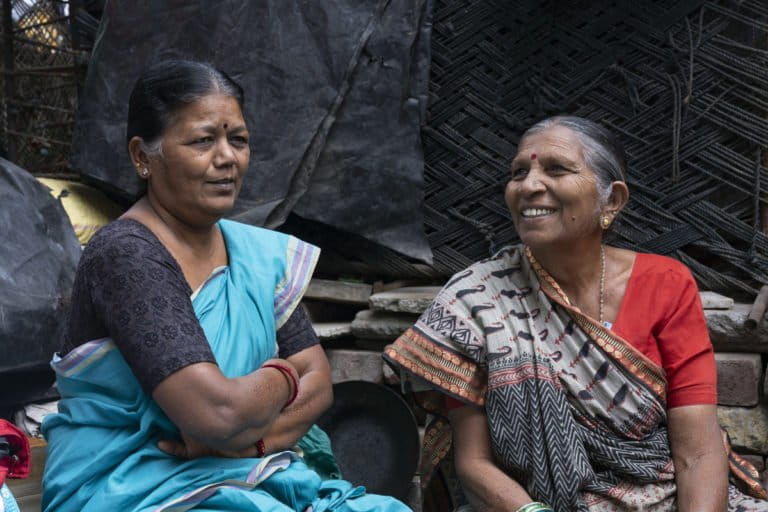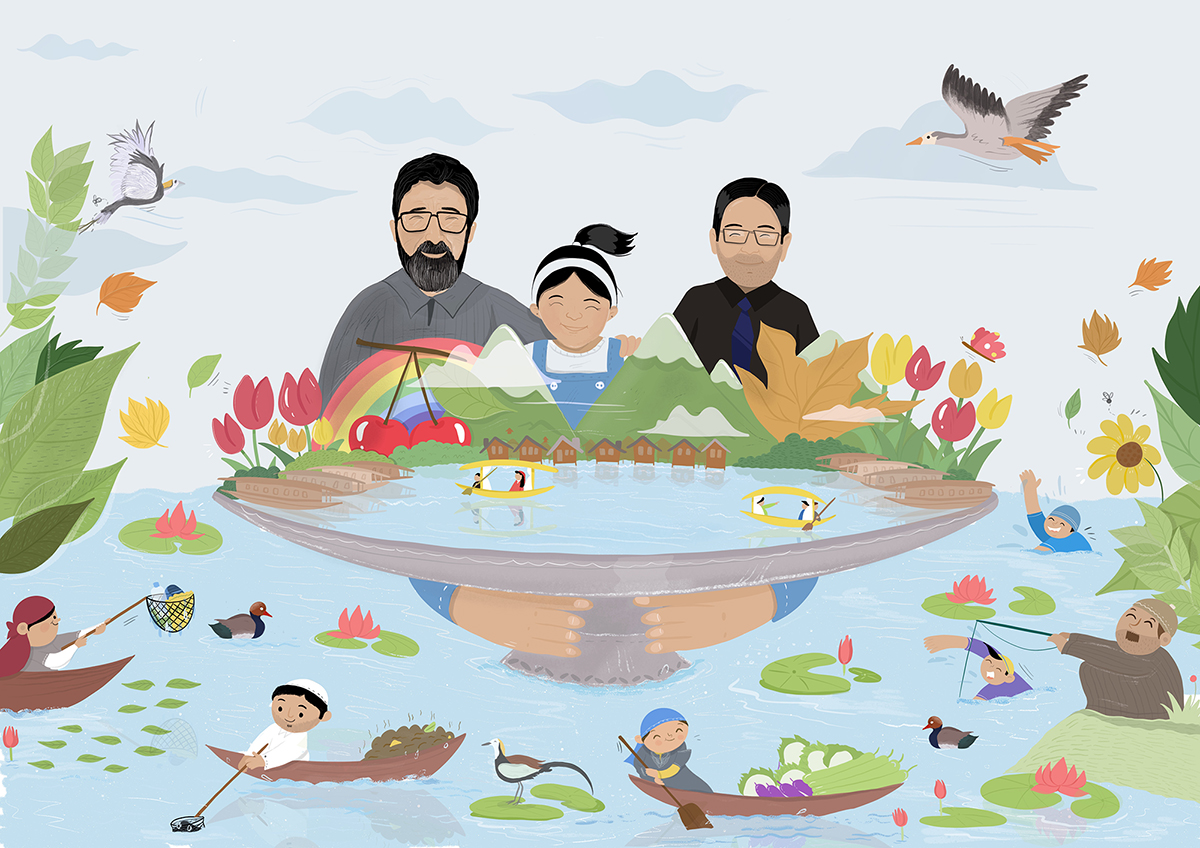- In our series called Eco Hope, which we launched in 2020, we wrote over 50 stories of inspiration, solutions and environmental heroes.
- Through this year we also continued our focus on solutions journalism, particularly highlighting how women eco-heroes are working through challenges for women-centric solutions for environmental problems.
- We start the new year on an optimistic note once more and promise you high quality, good and honest journalism from Mongabay-India – now in Hindi too.
This year has been unexpected, to say the least. At the start of 2020, we marked the turn of the decade with optimism – we launched a series, Eco Hope, with stories of inspiration and solutions. Little did we know that shortly after, the upbeat tone we set for the year would fizzle out as the world would be engulfed in a pandemic and associated challenges.
But as we look back now, at the 50+ stories we’ve done under this series, it is heartening to know that despite everything that this year has thrown at us, there have indeed been sparks of hope appearing every now and then.
One of our earliest Eco Hope stories this year was also one of the last times we travelled in 2020. Our contributing editor Mayank Aggarwal visited Sawai Madhopur where he met and wrote about Aditya Singh who had quit his Indian civil services job, left his well-appointed house in Delhi and settled in a remote corner of Rajasthan, abutting the famous Ranthambore Tiger Reserve, in 1998. Over the last 20 years, Singh has been buying tracts of land adjacent to Ranthambore and simply letting the forest grow back. The landholding is now a lush green forest patch that is frequented by wild animals, including tigers, throughout the year. A video on Singh’s work became one of our most popular videos for the year.

Shortly after, as India went into a lockdown and uncertainties hit various sectors, conservation biologists began to come to terms with the “new normal”. The pandemic had disrupted food supply for animals, postponed fieldwork and training, and there was the looming possibility of reduced funding for research grants and conservation programs. Amid the uncertainties, many of the conservationists continued to observe and monitor wildlife remotely, kept channels of communication with citizen scientists and students open, designed online courses and prepared for the arrival of a new generation infusing hope and optimism for species conservation.
The bleak news as the pandemic spread across the country, the lockdowns and the journey of migrant labourers to their villages led to collective despair. But if there ever were silver linings to one of the roughest periods of recent times, we found them – the lockdown period gave rise to some citizen science initiatives and personal projects highlighting India’s urban biodiversity, an interest in kitchen gardens and composting spiked among urban residents and reverse migration sparked some cheer in the agricultural sector in some villages.
Through this year we also continued our focus on solutions journalism. With Sahana Ghosh, our contributing editor and a Solutions Journalism LEDE fellow 2019-20, at the helm, we worked with women contributors from across the country to highlight how the environment impacts women uniquely in our Environment and Her series. From the story of the barefoot ecologist who brought forests to life, to the young herpetologists bringing freshwater turtles into the spotlight and the women fighting against solid waste dumping in a Himachal village – we found eco-heroes that worked through challenges to implement women-centric solutions for environmental problems.
That brings us to another moment of optimism in Mongabay-India’s journey in this overall difficult year – in the middle of this year, we launched in Hindi, bringing on board new colleagues who will bring even more stories of hope, inspiration and solutions from around the country.
While we can’t predict what 2021 will be like, we will still start the year on an optimistic note once more. Read some of our Eco Hope stories from the year gone by and stay tuned for another year of high quality, good and honest journalism from Mongabay-India – in English and Hindi!
Happy New Year!
Madhya Pradesh’s ‘fluoride warriors’
Social science students in Madhya Pradesh are documenting excess fluoride in water points through a citizen science approach led by Columbia University researchers and local partners using smartphones and portable fluoride detection kits.
Story of a river bed, a geological marvel and community pride
Villagers from Bori Budruk in Maharashtra are on a mission to preserve a unique geomorphological feature on the bed of the river Kukadi that runs past their village.
Villagers develop a protective ring around the Ranthambore tiger reserve
Around 50 volunteers as part of the Village Wildlife Volunteers programme in Ranthambore share real-time information about the movement of wild animals, mainly tigers, with the forest authorities and involve the larger community in and around the Ranthambore tiger reserve in their wildlife protection and conservation process.

The yak bull from Bhutan raised in Sikkim
Sikkim in India is raising a yak bull gifted by Bhutan in a transboundary germplasm exchange to improve the species gene pool. The exercise will facilitate the gene flow from one population to another, ensure genetic diversity in the transboundary yak population and produce healthy offspring that can produce more milk, meat, and fibre.

Making slums climate-resilient, one house at a time
Mahila Housing Trust, an Ahmedabad-based NGO is helping urban slums to adapt to pressing climate change issues such as heat stress and flooding. The non-profit has helped houses to bring down their indoor temperatures by switching to cooling roofs and reduce energy bills by installing energy-efficient devices.
Migratory openbill storks find safe haven in Andhra village
Telukunchi village’s community in Andhra Pradesh welcomes Asian openbill storks every monsoon in the hope of good rains and prosperity. The community has framed rules to punish those who harm the birds.
Bridging the gender gap through groundwater monitoring
A group of trained farmer-researchers, ‘Bhujal Jaankars’ in two Rajasthan and Gujarat watersheds monitor groundwater levels under a village-level project for groundwater sustainability.
Once fighting for Bodoland, 35 men divert their efforts to grow a forest
A group of 35 men have created a lush green forest by planting over 1.4 million saplings over the past fifteen years in Assam state in north-eastern India.
India’s first two tsunami-ready villages
Noliasahi and Venkatraipur villages in Odisha have been declared “Tsunami Ready” as part of a UNESCO-implemented programme. The two villages were given the certification based on 11 parameters including preparation of a Community Tsunami Risk Reduction Plan, mapping of tsunami hazard zones, public display of tsunami information, evacuation maps and more.
A citizen’s movement to protect wetlands emerges in Jammu and Kashmir
Around 25 Eco Watch teams across 23 districts of Jammu and Kashmir as well as Kargil and Leh, spurred into action, cleaning various water bodies – from freshwater springs at Verinag, Chatlam wetlands to a cleanliness drive at Kausar Nag at an altitude of 13,0000 feet above sea level. Jammu & Kashmir’s wetlands provide habitat for migratory birds and act as buffer zones during floods.
[Commentary] In a pandemic, a chance to make India’s recovery and growth equitable
Post-lockdown economic stress added to the woes of the Indian economy, which was already decelerating, much before COVID-19 pandemic. However, news of a normal monsoon that is still the mainstay of the country’s economy brought some hope for a stressed economy and worried government.
Read more: Editor’s review of 2020: Virus, controversies, wildlife, transitions and wetlands









